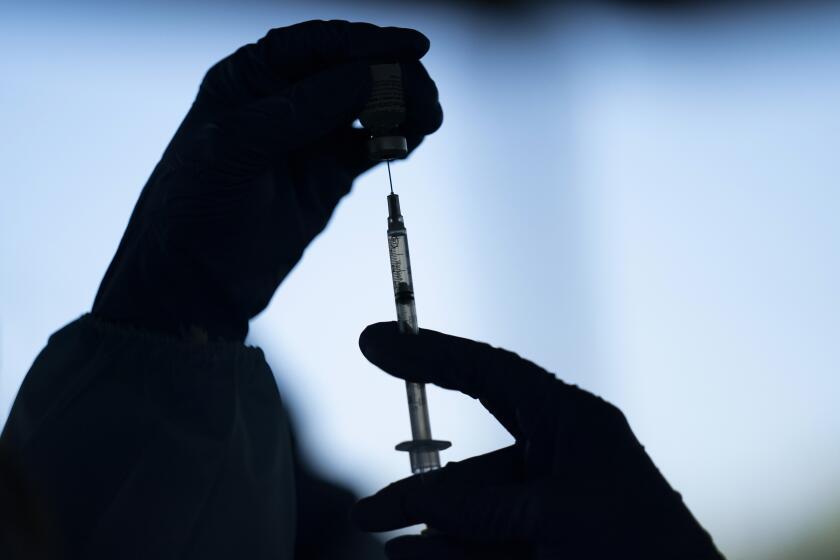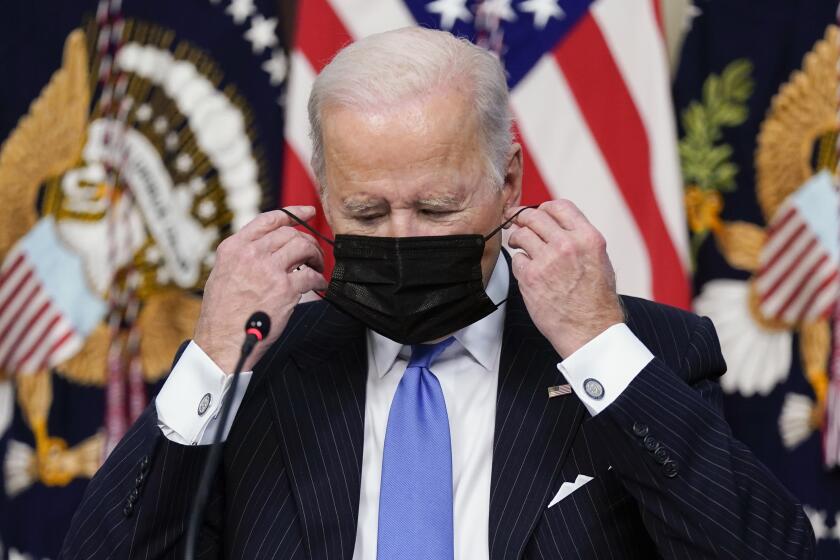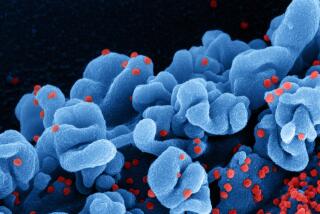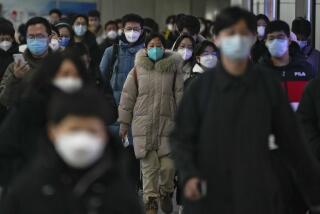How bad will Omicron be? Scientists won’t really know for months
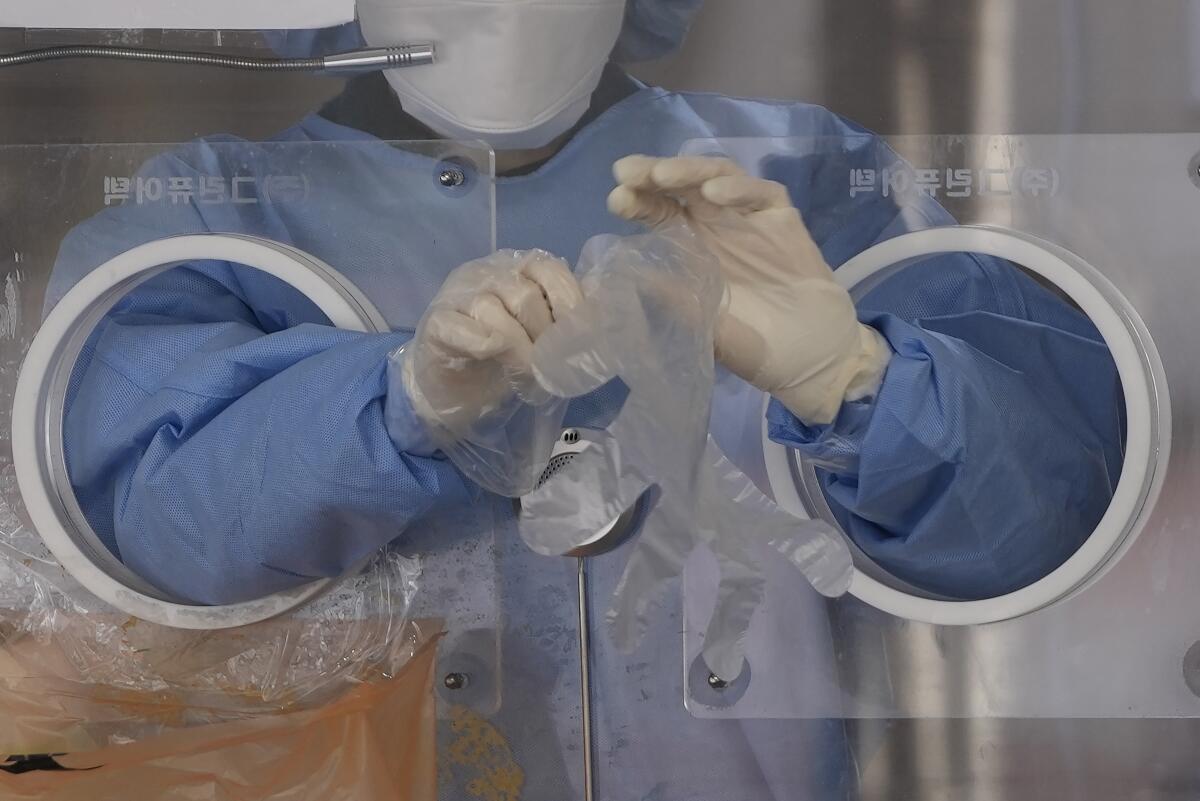
In a virus that has already killed 5.2 million people across the globe, 50 or so new mutations sound like a nightmare for humanity. But in the age-old battle between microbes and mankind, that many genetic changes can turn the tide in any direction.
The next chapter of the pandemic could feature an Omicron variant that spreads more readily than Delta, blows past the defenses of a fully vaccinated immune system, and, like its coronavirus cousin that causes Middle East respiratory syndrome, kills more than one-third of those who get it. That worst-case scenario would be an unfathomable disaster, said Dr. Bruce Walker, an immunologist and founding director of the Ragon Institute in Cambridge, Mass.
At the other end of a wide spectrum of possibilities, humanity could catch a break. Omicron could turn out to be a benign variant that spreads as fast as Delta, is easily tamed by vaccine, and barely sickens its victims while leaving them with some immunity and little risk of developing “long COVID.” In that case, “nature may have created a natural vaccine,” Walker said.
But it will take weeks and months — and the work of a legion of scientists across the globe — to begin to know whether the Omicron variant will change the course of the pandemic, and how.
In the waning days of 2021, microbiologists, immunologists and genetic scientists will offer key early insights into the variant’s penchant for spread and its ability to thwart treatments and vaccines in the confines of a lab.
It will take until early 2022 for contact-tracing teams and epidemiologists to flesh out the emerging picture with real-world data on whom Omicron sickens, and the extent of their illnesses. Then mathematical modelers will plug in what’s known, fill in what’s not, and forecast a range of outcomes.
Until those bits and pieces of evidence begin to congeal, all we have are anecdotes, said infectious-disease specialist Dr. Joshua Schiffer of the Fred Hutchison Cancer Research Center in Seattle, “and the anecdotes are not helpful.”
The impact of the Omicron variant “really needs to be assessed in a systematic way, looking at very large numbers of people,” Schiffer said. “This is going to take a bit of time to parse.”
The recent discovery of the Omicron variant of the coronavirus has upended the outlook for a pandemic that was expected to get worse over the winter.
Once again, the coming months will provide the public a lesson in both the science of uncertainty and the uncertainty of science. Like a jigsaw puzzle, the complete picture of Omicron’s impact will emerge only in pieces.
Almost two years into a pandemic, scientists need to take the measure of the SARS-CoV-2 virus yet again. This time, they have a variant changed by an unprecedented number of mutations with worrisome histories. And they are assessing its strengths and weaknesses in a diverse population of potential hosts that ranges from uninfected-and-entirely-susceptible to vaccinated-and-boosted.
“There are so many moving parts,” said Dr. Jonathan Li, a Harvard infectious-disease specialist who directs the virology laboratory at Brigham and Women’s Hospital in Boston.
It’s possible that Omicron’s detection just happened to coincide with an isolated outbreak or superspreader event that prompted South African scientists to step up their collection of viral coronavirus specimens.
If Omicron fails to gain more footholds as it lands in a wider range of places, its apparent role in driving South Africa’s latest outbreak may prove to have been a case of misattribution, Schiffer said.
Now that the Omicron variant has been detected in several countries, its powers of transmission will be tested. If it’s found to be gaining ground, the next challenge will be for scientists to determine whether its increased spread is a function of some innate biological advantage that helps it spread from person to person and whether it’s specially equipped to evade the defenses of people who gained immunity from a vaccine or past infection.
As scientists study the Omicron variant, President Biden strives to show he can still control an evolving pandemic threat.
A cursory check of Omicron’s constellation of mutations raises deep concerns on both fronts.
“This variant seems to have some of the greatest hits when it comes to mutations,” Li said.
A good many of them are heavily concentrated along a string of genetic code that governs the shape and behavior of the spike protein, which the virus uses to latch onto human cells. Two mutations are at a site the virus uses to pry its way into those cells and hijack them for its own replication. And several more have been seen in other variants that are capable of evading antibodies made by the immune system in response to vaccines and previous infections.
That’s just the beginning.
“It’s not only the sheer number of mutations” that’s concerning, Li said. It’s how broadly across the virus’ genome they are scattered, and the range of functions they have the potential to change: “It just has a lot of mutations, all over the place.”
If Omicron does establish itself outside southern Africa, scientists will need to gauge the relative contributions of the variant’s increased transmissibility and its ability to overpower a prepared immune system. Those findings will help guide the next steps, including a potential renewal of public health measures and the reformulation of mRNA vaccines and boosters specifically tailored to thwart the new variant. Vaccine makers Pfizer and Moderna have said they could ready such vaccines in just a few months’ time.
With lab studies to guide their hunches, scientists should find the task of separating increased transmissibility from so-called immune escape simple enough. If new infections linked to Omicron occur primarily in unvaccinated people, heightened transmissibility would seem to be at work. If new infections are just as likely to occur in people who’ve been vaccinated as in those who haven’t, scientists might conclude the variant has found its way around antibodies meant to block it.
But that seemingly straightforward analysis will be complicated by several factors. The COVID-19 vaccines available across the world have ranged widely in their ability to block reinfection.
The U.S. Centers for Disease Control and Prevention on Monday strengthened its recommendations on who should get boosters.
The waning of vaccine-induced immunity has thrown another wild card into the mix. If a vaccinated person has a breakthrough case involving Omicron, it won’t necessarily be clear whether the variant busted through the vaccine’s defenses or those defenses had already fallen on their own.
If it turns out that Omicron isn’t readily stopped by vaccines, the world would find itself back at square one, said Dr. Charles Chiu, an infectious disease specialist at UC San Francisco.
But it may take more than that for the variant to wreak havoc, he added.
The Beta variant first seen in South Africa and the Gamma variant in Brazil both demonstrated the ability to evade vaccine defenses, Chiu said. But when they competed head-to-head against the highly transmissible Delta variant in the United States and elsewhere, they didn’t gain much traction, Chiu said.
The lesson: Even if Omicron is adept at overcoming vaccines, its impact will be blunted if it can’t unseat Delta.
The final test of Omicron’s powers to worsen the pandemic will be to understand whether it can make people sicker and cause more deaths than the variants that have come before. If it is both more transmissible and more virulent, the result would be disastrous, Walker said.
“That is the question that’s most important to answer,” he said.
But scientists will have to be patient. It typically takes at least a couple of weeks of illness for an infected person to become sick enough to be placed under intensive care or to die, Walker said. And scientists will have to meld clinical data with genetic sequencing to know whether Omicron’s mutations are responsible.
Tulio de Oliveira, the South African geneticist who led the team that identified the Omicron variant, said scientists across Africa will be working feverishly to collect that data over the next several weeks. He said he suspects that greater powers of both transmission and of immune escape have pushed Omicron into the global spotlight. But he’s reluctant to make predictions about the variant’s ability to sicken.
“The next weeks are so crucial,” he said.
